.jpg/800px-Manchester_from_Kersal_Moor_William_Wylde_(1857).jpg) |
| Manchester from Kersal Moor , by William Wyld |
In this session we talked about the 18th century known as Age of Enlightenment . We discussed the major changes in society that occurred in the 18th century and some typical forms of art of that time and modern day artists inspired by past and in particular we compared some of the modern artist's work with that of artist of 18th century. We looked at several famous artists of the period and compared them with modern day artists inspired from the past.
major changes that occurred in the 18th century аre:
- beginning of the modern age
- the expansion of empirical knowledge
- seeing and thinking for yourself
- age of enlightenment
- industrial revolution
'Enlightenment is associated with the pursuit of spiritual and material upliftment of people through both personal and through public education, and with the development of democratic principles. Supporters and promoters of the Enlightenment promise relief from superstition (to which some European philosophers and religions attributed) release of ideological and political oppression of the absolute monarchies that dominate European countries, highlighting the human person, the recognition of their rights and opportunities for physical prosperity through the development of science and education '(Karamuzi2004).The worship of science is a feature of the Enlightenment when many new sciences occurred - political economy, sociology, psychology, statistics. the eighteenth century is Often called. "Century of Philosophy"
We can talk a lot about the era of enlightenment, as these are the doors to the modern world we live in now. and yet the focus of our session was more on the art of this period and some modern artistс inspired by the past.
One exaple is Vivienne Westwood:
''I'm a great believer in copying. There has never been an age in which people have so little respect for the past''She is known to get her inspiration by visiting historical museums like the Victoria and Albert Museum and London’s Wallace Collection. and taking ideas for designing clothes for her brand.
 |
| 18th century coat |
Other example of past-time inspiration in modern times is the logo used by Mc Ewan's beer which originated from the Dutch painter's Frans Hals painting of ''Laughing Cavalier''
 |
Laughing Cavalier |
 |
| Mc Ewan's logo |
 |
| Mc Ewan's logo |
Some of Grayson Perry's works are also inspired by the past. He is really interested in history and modern day society . His series of six tapestries depicting the taste ideas of Britons, entitled "The Vanity of Small Differences." analysed the ideas of taste held by the different social classes. they are inspired by the tapestries from the past who normally depicts the daily life of different social classes. like the famous Devonshire hunting tapestry;
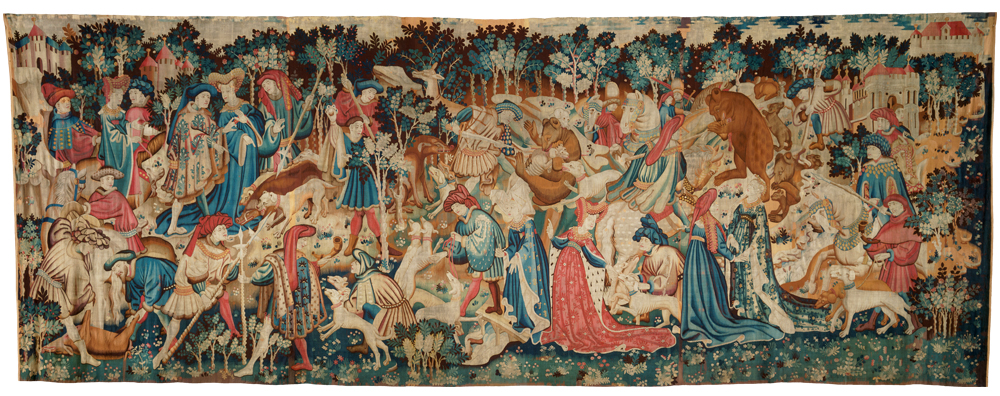 |
| Devonshire hunting tapestry |
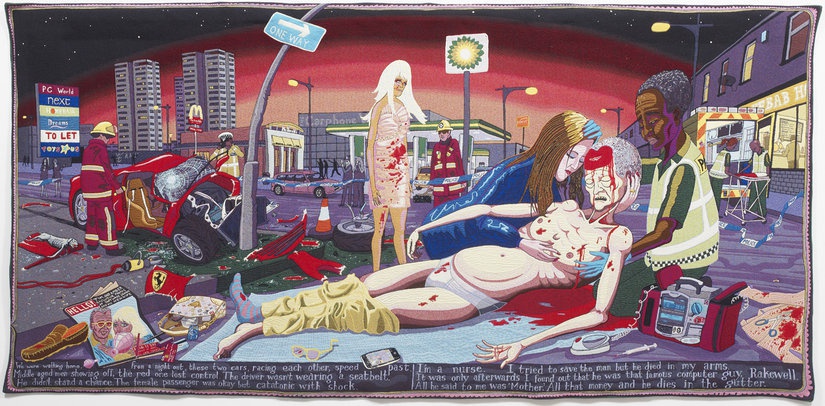 |
| Grayson Perry's 'painting from "The Vanity of Small Differences." series |
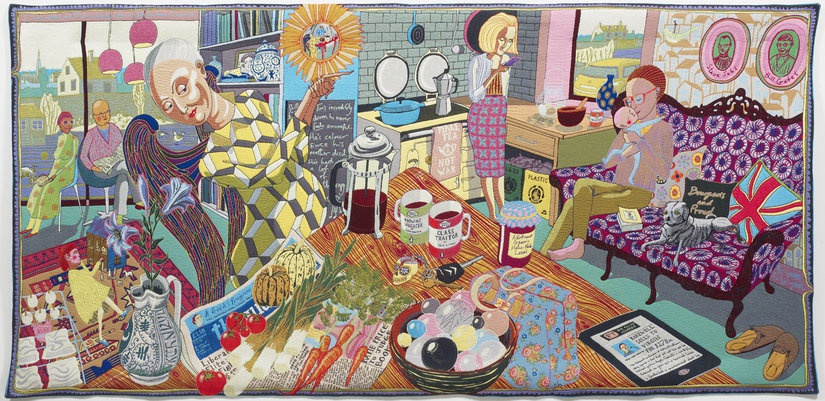 |
| Grayson Perry's 'painting from "The Vanity of Small Differences." series |
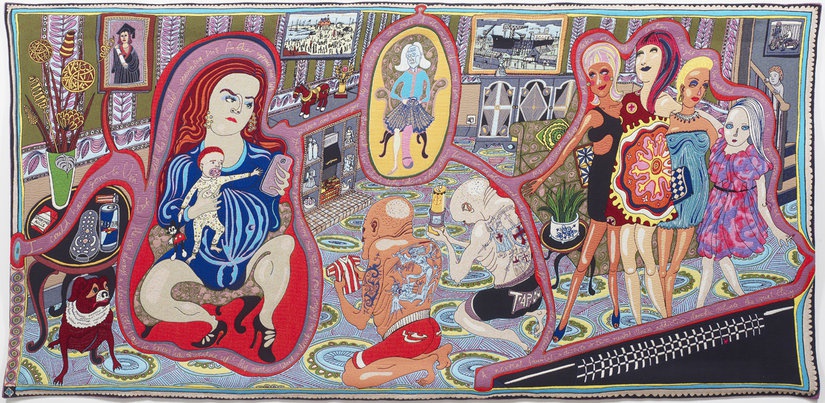 |
| Grayson Perry's 'painting from "The Vanity of Small Differences." series |
We discussed some works of William Hogarth - ''an English painter, printmaker, pictorial satirist, social critic, and editorial cartoonist who has been credited with pioneering western sequential art .His work ranged from realistic portraiture to comic srtip-like series of pictures called "modern moral subjects". Knowledge of his work is so pervasive that satirical political illustrations in this style are often referred to as "Hogarthian" .
We compared the modern artist Banksy as the modern version of Hogarth. Hogarth's as well as Banksy's works are focused on some problems of the society and show the moral issues of it.
In 1731 Hogarth completed the earliest of his series of moral works, a body of work that led to significant recognition. The collection of six scenes was entitled A Harlot's Progress .A Harlot's Progress depicts the fate of a country girl who begins prostituting—the six scenes are chronological, starting with a meeting with a bawd and ending with a funeral ceremony that follows the character's death from venereal disease.The inaugural series was an immediate success and was followed in 1735 by the sequel A Rake's Progress consisted of eight pictures that depicted the reckless life of Tom Rakewell, the son of a rich merchant, who spends all of his money on luxurious living, services from prostitutes, and gambling—the character's life ultimately ends in Bethlem Royal Hospital.
 |
| One of the scenes from Rake's Progress by William Hogarth |
 |
| One of the scenes from Harlot's Progress by William Hogarth |
 |
| Banksy |
 |
| Banksy |
 |
| Banksy |
British painters from 18th century:
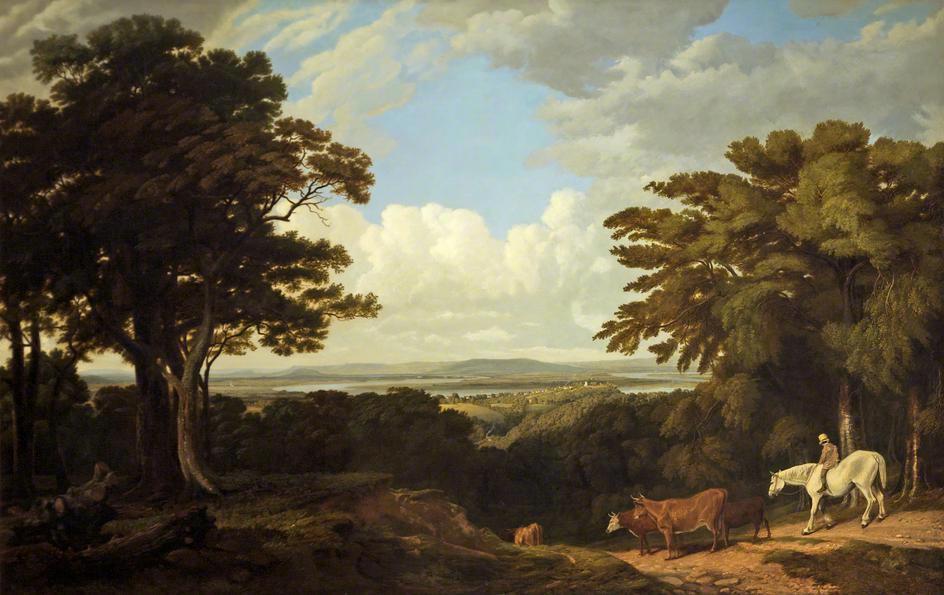 |
| Newnham-on-Severn from Dean Hil - William Turner of Oxford |
 |
| Flin Castle - William Turner |
John Constable
Thomas Gainsborought
''The work is an unusual combination of two common types of painting of the period: a double portrait, here of a recently married couple, and a andskape view of the English countryside. Gainsborough's work mainly consisted of these two different genres, but their striking combination side-by-side in this extended horizontal format is unique in Gainsborough's oeuvre, and extremely rare in other painters. Conversation piece was the term for a portrait group that contained other elements and activities, but these normally showed more figures, set engaged in some activity or in an interior, rather than a landscape empty of people. Gainsborough was later famously given to complaining that well-paid portrait work kept him away from his true love of landscape painting, and his interest probably combined with that of his clients, a couple from two families whose main income was probably not from landowning, to make a more prominent display than was normal in a portrait of the country estate that had formed part of Mrs Andrews' dowly''
Links:
http://en.wikipedia.org/wiki/Age_of_Enlightenment - Age of Enlightement
http://en.wikipedia.org/wiki/Industrial_Revolution - Industrial Revolution
http://www.dailymail.co.uk/femail/article-2110016/Paris-Fashion-Week-2012-Dame-Vivienne-Westwood-takes-inspiration-17th-Century.html - Vivenne Westwood article
http://en.wikipedia.org/wiki/Wallace_Collection - Wallace collection museum
http://en.wikipedia.org/wiki/Laughing_Cavalier - Laughing Cavalier by Frans Hals
http://en.wikipedia.org/wiki/All_In_The_Best_Possible_Taste_with_Grayson_Perry - Grayson Perry's TV series
http://en.wikipedia.org/wiki/William_Hogarth - William Hogarth
http://banksy.co.uk/ - Banksy officia site
http://en.wikipedia.org/wiki/Mr_and_Mrs_Andrews - Mr. and Mrs. Andrew by Thomas Gainsborought


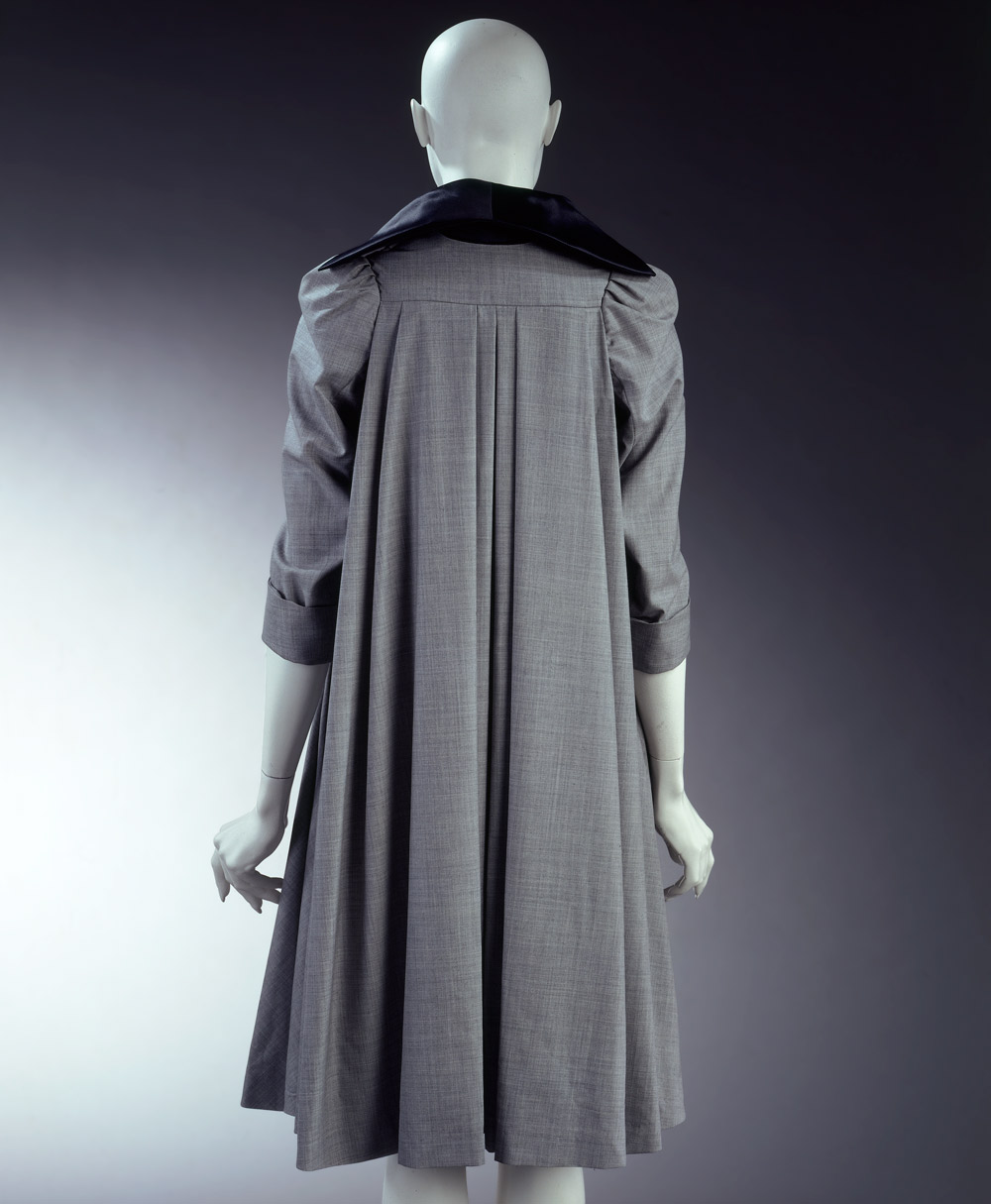


No comments:
Post a Comment